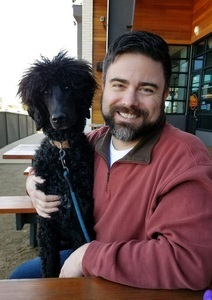8315655
Ch 13 & 14 - Brainstem Random Questions
Descripción
Sin etiquetas
Test por Ben Williams, actualizado hace más de 1 año
Más
Menos

|
Creado por Ben Williams
hace más de 7 años
|
|
Resumen del Recurso
Pregunta 1
Pregunta
What region of the brainstem governs Non-REM Sleep?
Respuesta
-
Caudal Medulla
-
Pons
-
Rostral Medulla
Pregunta 2
Pregunta
What region of the brainstem governs REM Sleep?
Respuesta
-
Pons
-
Caudal Medulla
-
Rostral Medulla
Pregunta 3
Pregunta
Which State of Altered Consciousness is Characterized by:
Excessive Daytime Sleepiness
Cataplexy
Dream-Like Hallucinations
Sleep Paralysis
Respuesta
-
Narcolepsy
-
Coma
-
Vegetative State
-
Minimally Conscious State
Pregunta 4
Pregunta
Which State of Altered Consciousness is Characterized by:
Unarousable/Unresponsive
Brainstem Reflexes Present
Cortical Responses Absent
EEG Abnormal
Respuesta
-
Coma
-
Narcolepsy
-
Brain Death
-
Minimally Conscious State
Pregunta 5
Pregunta
Which State of Altered Consciousness is Characterized by:
Brainstem Reflexes Absent
Cortical Responses Absent
EEG Flat
Respuesta
-
Brain Death
-
Coma
-
Vegetative State
-
Minimally Conscious State
Pregunta 6
Pregunta
Which State of Altered Consciousness is Characterized by:
Sleep-Wake Cycles Present
Brainstem Reflexes Present
Cortical Responses Absent
Respuesta
-
Vegetative State
-
Minimally Conscious State
-
Narcolepsy
-
Brain Death
Pregunta 7
Pregunta
Which State of Altered Consciousness is Characterized by:
Minimal/Variable Degree of Responsiveness
Visual Tracking Present
Respuesta
-
Minimally Conscious State
-
Brain Death
-
Coma
-
Narcolepsy
Pregunta 8
Pregunta
The Rinne Test involves putting a tuning fork on the [blank_start]mastoid bone[blank_end].
The Weber Test involves putting a tuning fork on the [blank_start]midline of the skull[blank_end].
Respuesta
-
midline of the skull
-
mastoid bone
-
SCM muscle belly
-
tip of the chin
-
shoulder
-
tip of the nose
Pregunta 9
Pregunta
Rinne Test Results: Bone Conduction Louder
Respuesta
-
Conductive Hearing Loss
-
Sensorineural Hearing Loss
Pregunta 10
Pregunta
Rinne Test Results: Air Conduction is Louder, but diminished on Affected Side
Respuesta
-
Sensorineural Hearing Loss
-
Conductive Hearing Loss
Pregunta 11
Pregunta
Weber Test Result: Quieter on Affected Side
Respuesta
-
Sensorineural Hearing Loss
-
Conductive Hearing Loss
Pregunta 12
Pregunta
Weber Test Result: Louder on Affected Side
Respuesta
-
Conductive Hearing Loss
-
Sensorineural Hearing Loss
Pregunta 13
Pregunta
Which structures in the Vestibular System detect Angular Acceleration (Head Rotation)?
Respuesta
-
Semicircular Canals
-
Cochlea
-
Utricle
-
Saccule
-
Vestibule
Pregunta 14
Pregunta
Which structures in the Vestibular System detect Linear Acceleration (Head Tilt)?
Respuesta
-
Vestibule
-
Utricle
-
Saccule
-
Cochlea
-
Semicircular Canals
Pregunta 15
Pregunta
You suspect your patient has a lesion along the sympathetic pathway to the eye, possibly relating to Horner's Syndrome. To determine where exactly the lesion is located you put eye drops in their eyes and test for sweating. The eyes dilate and you note a lack of sweat, where is the lesion?
Respuesta
-
Preganglionic Lesion: Proximal to Superior Cervical Ganglion
-
Postganglionic Lesion: Distal to Superior Cervical Ganglion
-
Preganglionic Lesion: Proximal to Inferior Cervical Ganglion
-
Postganglionic Lesion: Distal to Inferior Cervical Ganglion
Pregunta 16
Pregunta
Select the characteristic symptoms of Horner's Syndrome.
Respuesta
-
Ptosis
-
Miosis
-
Anhidrosis
-
Mydriasis
-
Anisocoria
-
Hypertension
Pregunta 17
Pregunta
Generally speaking, Horner's Syndrome is caused by a disruption to the parasympathetic pathways to the eye and face.
Respuesta
- True
- False
Pregunta 18
Pregunta
Which of the following are true regarding Lock-In Syndrome?
Respuesta
-
Sensation Present
-
Cognition Present
-
Motor Control Absent
-
Vertical Eye Movements Present
-
Sensation Absent
-
Cognition Absent
-
Motor Control Present
-
Horizontal Eye Movements Present
-
Bad Prognosis: No Known Cure
-
Good Prognosis: Temporary Condition, Resolves Naturally
Pregunta 19
Pregunta
This is [blank_start]Decerebrate[blank_end] Posturing indicative of a lesion [blank_start]at or above the midbrain[blank_end].
Respuesta
-
Decerebrate
-
Decorticate
-
Decerebellate
-
at or above the midbrain
-
in the lower brainstem
-
in the cerebellum
Pregunta 20
Pregunta
This is [blank_start]Decorticate[blank_end] Posturing indicative of a lesion [blank_start]in the lower brainstem[blank_end].
Respuesta
-
Decorticate
-
Decerebrate
-
Decerebellate
-
in the lower brainstem
-
at or above the midbrain
-
in the cerebellum
Pregunta 21
Pregunta
How are Horner's Syndrome and Wallenberg's Syndrome related?
Respuesta
-
Horner's Syndrome is a Symptom of Wallenberg's Syndrome
-
Wallenberg's Syndrome is a Symptom of Horner's Syndrome
-
They are not related.
Pregunta 22
Pregunta
Symptoms for [blank_start]Wallenberg's[blank_end] Syndrome include:
[blank_start]Ipsilateral[blank_end] [blank_start]Decreased[blank_end] Facial Pain and Temperature Sense.
[blank_start]Contralateral[blank_end] [blank_start]Decreased[blank_end] Body Pain and Temperature Sense.
Respuesta
-
Wallenberg's
-
Horner's
-
Ipsilateral
-
Contralteral
-
Decreased
-
Increased
-
Contralateral
-
Ipsilateral
-
Decreased
-
Increased
Pregunta 23
Pregunta
Wallenberg's Syndrome may be caused by Thrombosis in the [blank_start]Vertebral a.[blank_end] or [blank_start]PICA[blank_end].
Respuesta
-
Vertebral a.
-
Basilar a.
-
Anterior Spinal a.
-
Posterior Spinal a.
-
PICA
-
AICA
-
PCA
-
SCA
-
ACA
-
MCA
¿Quieres crear tus propios Tests gratis con GoConqr? Más información.
